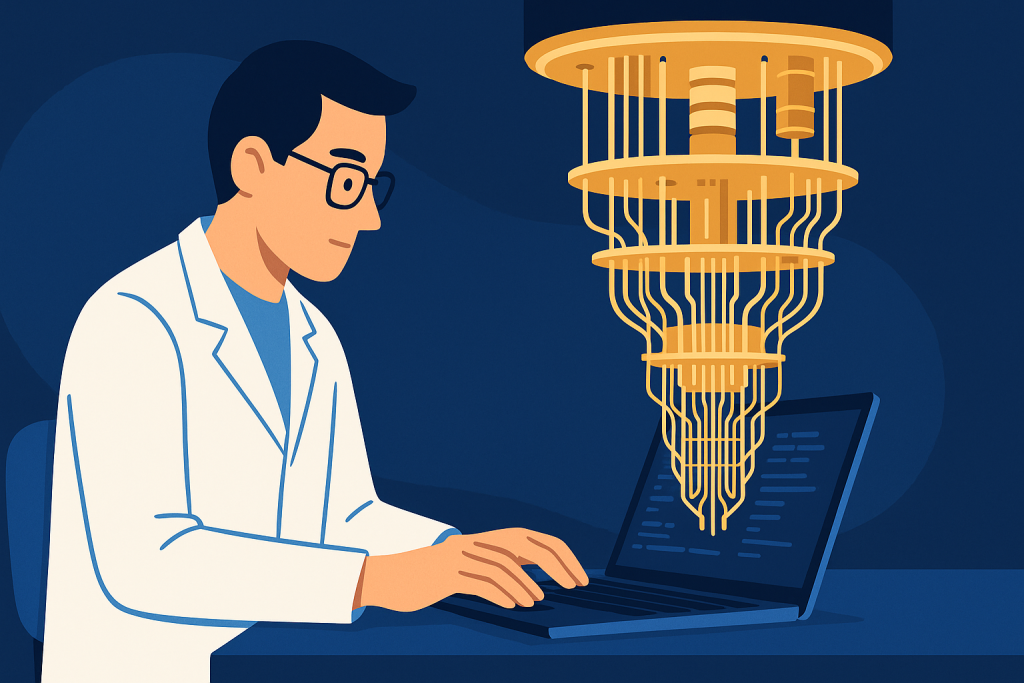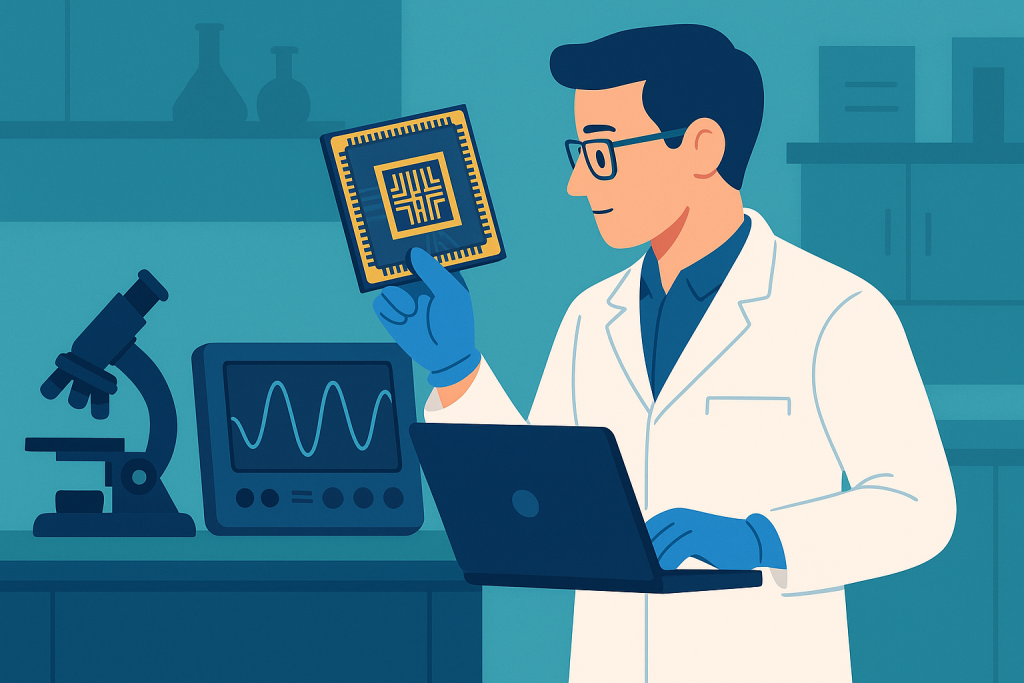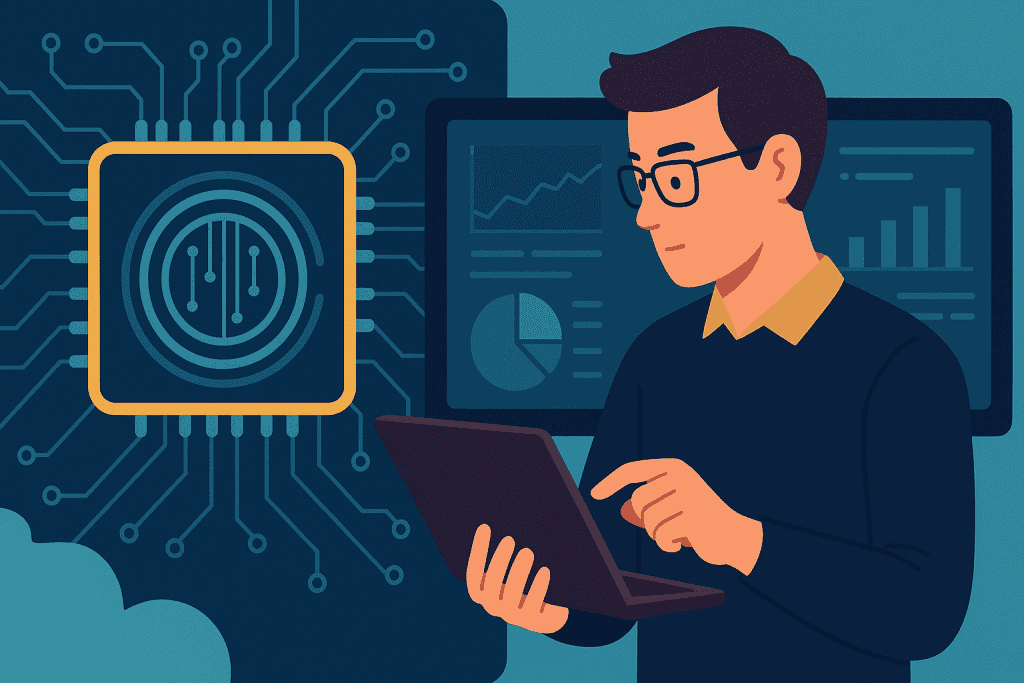Quantum Computing is no longer just an academic concept—it’s a growing field shaping the future of science and technology. Traditional computers use bits, either 0 or 1, but quantum computers harness qubits, which can exist in multiple states at once. This ability lets them solve certain problems exponentially faster than classical machines.
According to NIST and IBM, Quantum Computing is already being tested for simulating molecules in chemistry, improving logistics, and designing secure communication networks. McKinsey highlights that industries like finance and pharmaceuticals could see transformative change, while HPE and Microsoft emphasize its potential to address sustainability challenges. Governments are also investing heavily: the U.S. National Quantum Initiative, the EU’s Quantum Flagship, and major Chinese programs show how central this technology has become in global competition.
Understanding Quantum Computing is crucial, not just for researchers but also for businesses preparing to adapt to what many experts call the next revolution in computation.
What is Quantum Computing
Quantum Computing is a new paradigm of computation that leverages principles of quantum mechanics. Instead of binary bits, it uses qubits. Unlike bits, which are strictly 0 or 1, qubits can be in a superposition, existing as both 0 and 1 simultaneously. This enables quantum systems to evaluate many possibilities at once.
Another key principle is entanglement, where qubits share connections so strong that the state of one instantly influences the other, even across distance. Combined with interference, which enhances correct results and cancels out wrong ones, these features allow quantum systems to approach problems in entirely new ways.
As IBM explains, qubits can be implemented with different physical systems, such as superconducting circuits, trapped ions, or photons. Each approach has unique strengths—some provide longer stability, while others enable faster operations. Current quantum machines are experimental but progressing rapidly.
Breaking Down Quantum Computing

To see why Quantum Computing is so powerful, it helps to break down its core ideas:
- Superposition – A qubit can hold multiple states simultaneously, expanding computational power.
- Entanglement – Qubits become linked, allowing complex problem-solving with fewer resources.
- Interference – Directs probabilities toward correct answers by reinforcing desirable results.
- Decoherence – Qubits lose quantum behavior when exposed to noise, making error correction vital.
Example: Imagine navigating a massive maze. A classical computer tries each path one after another. A quantum computer evaluates many paths simultaneously and identifies the most efficient solution far faster.
However, building reliable systems is difficult. Qubits are fragile and require cooling to near absolute zero. NIST stresses that error correction codes and logical qubits are critical to overcome instability. Microsoft’s research into topological qubits focuses on making them less error-prone by design.
Despite these challenges, progress is steady. IBM has developed processors like Eagle (127 qubits) and Osprey (433 qubits), while Google’s Sycamore achieved “quantum supremacy” by performing a calculation no classical computer could achieve in reasonable time.
History

The field’s history spans decades of theory and engineering.
| Year | Milestone |
|---|---|
| 1981 | Richard Feynman proposes simulating physics with quantum systems |
| 1994 | Peter Shor creates an algorithm for factoring numbers, threatening RSA encryption |
| 2001 | IBM and Stanford build a 7-qubit quantum system |
| 2019 | Google’s Sycamore chip demonstrates “quantum supremacy” |
| 2023 | IBM releases the 433-qubit Osprey processor |
| 2024 | Advances in error correction and early quantum networking emerge |
McKinsey notes that governments are treating Quantum Computing as strategic infrastructure. Programs like DARPA projects in the U.S., the EU Quantum Flagship, and China’s state-led initiatives illustrate the race to lead in this field.
Types of Quantum Computing
Gate-Based Quantum Computing
This is the most general-purpose model. It uses quantum gates, similar to classical logic gates, to manipulate qubits and perform operations. According to IBM, this approach supports algorithms like Shor’s algorithm, which can factor large numbers and potentially break RSA encryption, and Grover’s algorithm, which speeds up database searches. These systems are versatile but require sophisticated error correction to scale.
Quantum Annealing
Instead of running general algorithms, quantum annealing focuses on optimization problems. By seeking the lowest-energy configuration of a system, it efficiently finds solutions for logistics, scheduling, and material design. Companies like D-Wave have built annealers used for tasks such as optimizing airline crew schedules and improving supply chain efficiency. While less flexible than gate-based machines, they are already being applied in real-world pilot projects.
Topological Quantum Computing
Still in the research stage, this model aims to use quasiparticles called anyons to encode information in topological states that are naturally resistant to errors. Microsoft emphasizes that this approach could reduce the need for massive error correction and make large-scale, stable quantum systems possible. Though experimental, it is considered one of the most promising long-term strategies.
Hybrid Quantum-Classical Computing
Many experts, including IBM and HPE, argue that the future is hybrid. In this model, quantum processors work alongside classical systems. Classical computers handle routine calculations, while quantum processors tackle the hardest parts of a problem—like molecular modeling or optimization. This division of labor makes quantum solutions more practical in the near term, even before large-scale quantum error correction becomes a reality.
| Type | Example | Best Use Case |
|---|---|---|
| Gate-Based | IBM Q, Google Sycamore | General algorithms (factoring, search) |
| Annealing | D-Wave | Optimization and scheduling |
| Topological | Microsoft Research | Fault-tolerant systems |
| Hybrid | IBM Qiskit, HPE systems | Near-term practical applications |
How does it work?
A quantum computer starts by preparing qubits, often in superposition. Algorithms manipulate these qubits using quantum gates, creating entanglement and interference. This builds a probability distribution of possible outcomes. When measured, the qubits collapse into classical values, revealing a solution.

IBM compares this to exploring a cosmic maze: classical machines test one path at a time, while Quantum Computing maps all possible paths simultaneously and identifies the most promising routes. This process is why it shows such promise for optimization, simulation, and problem-solving.
Pros & Cons
| Pros | Cons |
|---|---|
| Can solve problems far beyond classical systems | Qubits fragile, easily disturbed |
| Unlocks new innovation in science, medicine, and materials | Requires extreme cooling and stability |
| Enables next-gen cryptography and secure communication | May threaten today’s encryption systems |
| Reduces time and energy for complex tasks | Technology still experimental and costly |
Uses of Quantum Computing
Quantum Computing is moving from labs into pilot projects across industries:
Healthcare and Pharmaceuticals
Quantum systems simulate molecules with unmatched precision, accelerating drug discovery. HPE reports this could cut years off developing new therapies. Daimler has also used quantum approaches to study battery chemistry.
Finance
McKinsey highlights banks using quantum algorithms to optimize portfolios, reduce risk, and detect fraud. JPMorgan has already tested applications on IBM’s quantum systems, showing how financial modeling could be revolutionized.
Supply Chains and Logistics
Volkswagen has tested traffic optimization using quantum annealing, while DHL explores routing and scheduling improvements. Quantum tools may reduce emissions and costs at scale.
Cybersecurity
Quantum systems could one day break RSA encryption through Shor’s algorithm. To counter this, NIST is working on post-quantum cryptography standards. At the same time, quantum key distribution (QKD) enables secure communication that cannot be intercepted without detection.
Climate and Energy
Microsoft and HPE emphasize the potential for simulating new materials, improving solar cells, batteries, and carbon capture technologies. Quantum-enhanced weather models could also aid climate prediction.
This wide range of use cases shows why Quantum Computing is not just theory—it is becoming a platform for real-world new inventions and solutions.
Conclusion
From its origins in physics lectures to today’s prototype machines with hundreds of qubits, Quantum Computing has grown into one of the most critical technology trends of our time. While technical barriers remain, from qubit fragility to error correction, progress from companies like IBM, Google, and Microsoft demonstrates that the field is advancing quickly.
As IBM stresses, quantum will not replace classical computing but complement it—solving challenges classical systems cannot. Whether improving global healthcare, transforming supply chains, or securing communication networks, Quantum Computing is shaping the future.
Organizations that prepare now will benefit most from this shift. For everyone else, the takeaway is simple: Quantum Computing is no longer optional knowledge—it is the foundation of tomorrow’s innovation.
Resources
- NIST. Quantum Computing Explained
- IBM. Quantum Computing
- McKinsey & Company. What is Quantum Computing?
- Microsoft Learn. Understanding Quantum Computing
- Hewlett Packard Enterprise. What is Quantum Computing?
